Directive 2011/24/EU establishes the legal base that ERNs should “collaborate closely with other centres of expertise and networks at national and international level”. As per its name, the Joint Action on Integrating ERNs into National Health Systems (JARDIN) aims to improve accessibility to the European Reference Networks (ERNs) by integrating them into national systems. The vision is to put people living with rare diseases or complex conditions at the centre of care and make the care pathway clear and easily accessible. JARDIN’s activities will include the identification and exchange of best practices, the development of concrete recommendations, guidelines and patient pathways, and toolboxes suited for the needs of all Member States (taking into account the different preconditions, such as size and population, economy, and structure of the respective healthcare system), as well as supporting capacity-building and performing pilot implementation steps on different levels in the Member States in the proposed fields of action. JARDIN will develop strategies for systematic dissemination of information on the ERNs, with a specific emphasis on people living with rare diseases (PLWRD) as well as the healthcare professionals community. ERN eUROGEN will work with JARDIN to produce two patient care pathways – one on anorectal malformations and the second in collaboration with Endo-ERN on differences in sex development (DSD)/congenital adrenal hyperplasia (CAH). Read more: The members of ERN eUROGEN currently collaborate with the following other European Reference Networks: ERN ERNICA: The European Reference Network for rare Inherited and Congenital (digestive and gastrointestinal) Anomalies (ERN ERNICA) covers malformations of the digestive system (with working groups for oesophagal diseases, intestinal diseases, intestinal failure and gastroenterological diseases) and malformations of the diaphragm and abdominal wall (with working groups for malformations of the diaphragm and abdominal wall defects). These disorders have an early manifestation in life and need multidisciplinary care and long-term follow-up. ERN ERKNet: The European Reference Network for Rare Kidney Diseases (ERN ERKNet) is a consortium of 38 expert pediatric and adult nephrology centres in 12 European countries providing healthcare to more than 40,000 patients with rare disorders of the kidneys. Endo-ERN: The European Reference Network on Rare Endocrine Conditions (Endo-ERN) aims to improve access to high-quality healthcare for patients with hormonal disorders. Endocrine conditions are often complex and require a long period of care due to chronic disease without being life-threatening. Therefore, endocrine care requires equal distribution of paediatric and adult care. ERN ITHACA: The European Reference Network for Intellectual Disability, Telehealth, Autism and Congenital Anomalies (ERN ITHACA) meets the needs for highly specialized, multidisciplinary healthcare for patients with rare (multiple) malformation syndromes and rare intellectual and other neurodevelopmental disorders of genetic, genomic/chromosomal or environmental origin, both diagnosed and undiagnosed. ERN TransplantChild: The European Reference Network for Paediatric Transplantation (ERN TransplantChild) focuses on both Solid Organ Transplantation (SOT) and Hematopoietic Stem Cell Transplantation (HSCT) which are low-prevalence and complex conditions that require highly specialized expertise and resources. The network helps patients and family members who are going through or have gone through the complicated process of paediatric transplantation and works to improve the care of patients with this condition. ERN EURACAN: The European Reference Network for Rare Adult Solid Cancers (ERN EURACAN) aims to tackle these complex and rare cancers that require highly specialised treatment and concentrated knowledge and resources. The management of rare cancers poses significant diagnostic challenges, sometimes with major consequences for patients’ quality of life and outcome. Inappropriate management of these patients may also result in an increased risk of relapse, and risk of death. ERN eUROGEN’s research strategy aims to harness the collective research potential of all ERN eUROGEN’s healthcare providers and patients. Knowledge sharing will foster innovation and allow new treatments or surgical techniques to be tested and made available to patients where there are gaps in current effective diagnoses or treatments. ERN eUROGEN’s research activity focuses on its patient registry, but the network also collaborates with other initiatives, as outlined below. Through knowledge sharing, engagement with stakeholders in the rare disease domain and assembly of transdisciplinary research groups working across the global health spectrum, ERICA strives to reach the following goals: ERICA will strengthen research and innovation capacity by integrating ERN research activities and outreach to European research infrastructures to synergistically increase impact and innovation. This will result in efficient access and safe therapies for patients suffering from rare diseases and complex conditions. ERN eUROGEN regularly participates in ERICA activities, such as its General Assembly and working group meetings relating to its Work Packages. The European Joint Programme on Rare Diseases (EJP RD) programme aims to create an effective rare disease research ecosystem for progress and innovation and for the benefit of everyone with a rare disease. They support rare disease stakeholders by funding research, bringing together data resources & tools, providing dedicated training courses, and translating high-quality research into effective treatments. EJP RD brings together over 130 institutions (including all 24 ERNs) from 35 countries to create a sustainable ecosystem that allows a virtuous circle between research, care and medical innovation. EJP RD provides funding opportunities, a guide for patients in research, a research translation support office, a clinical studies support office, ethics and regulatory advice, a resource map showing coordinated access to data and services, and a free MOOC (Massive Open Online Course), “Introduction to Translational Research for Rare Diseases”. ERN eUROGEN has been involved in several successful applications for EJP RD funding, including: The European Rare Diseases Research Alliance (ERDERA) aims to enhance the health and well-being of the 30 million people in Europe affected by rare diseases, positioning Europe as a global leader in rare disease research and innovation. ERDERA’s ambition is aligned with the UN’s Sustainable Development Goals and the EU’s political priorities, focusing on improving the prevention, diagnosis, and treatment of rare diseases. Its vision is to create a comprehensive multi-stakeholder ecosystem that supports patient-centred research, develops new treatments, and utilizes health data and digital transformation. ERDERA’s mission involves consolidating research knowledge and resources across Europe, ensuring patient enrollment in clinical studies, and boosting investment to foster innovation, job creation, and competitiveness in the rare disease research sector. The study resulted in eight overarching recommendations to ensure that the future of the 30 million people living with a rare disease is not left to luck or chance. The eight final recommendations cover diagnosis, treatment, care, research, data, and European and national infrastructures and set out the roadmap for the next decade of rare disease policies. ERN eUROGEN had three members in the expert group. They attended several virtual meetings of the Rare 2030 “Panel of Experts”, along with many other stakeholders, to validate the trends and drivers that were identified, ranked, and prioritised throughout the year to define possible future trends important for rare diseases. They also contributed comments ensuring that highly specialised surgery was included in the recommendations, along with other important treatment options for patients with rare diseases and complex conditions. Over the last few years, it has become clear that international organisations are becoming increasingly interested in the innovative ERN model of using secure digital technologies to connect clinical and patient experts on rare diseases and complex conditions with healthcare professionals and patients seeking advice or information. This is one of the strengths of the ERN model, and the transparent funding from the European Commission means that the products developed by the ERNs (e.g., clinical practice guidelines and clinical decision support tools, publications, and protocols and documents related to registry development, such as Joint Research Centre (JRC) core datasets, informed consent, and data sharing agreements between healthcare providers, etc.) can be shared with other organisations as examples of good practice during collaborative exchanges. We believe that some “quick wins” are possible through collaborations around the development of the ERN eUROGEN registry. On 30 November 2022, the European Commission launched the EU Global Health Strategy to improve global health security and deliver better health for all in a changing world, as an external dimension of the European Health Union. The ERNs are waiting to see what this means for them, but one of the aims of the strategy is to expand the EU’s international partnerships on health, which ERN eUROGEN has already been doing through its global collaborative partnerships. Some examples of these global collaborative partnerships are listed below. Our full Global Collaboration Strategy can be downloaded here. In June 2024, CureforU celebrated three years of facilitating better cures for rare or complex diseases, specifically anorectal malformations and Hirschsprung’s Disease. Read their three-year journey here. In 2021, the Collaborative Global Network (CGN) Panel of Experts was set up and Michelle Battye, ERN eUROGEN Programme Manager, was invited to contribute to this work. The panel aims to shape international policy on rare diseases, strengthen health systems to address rare diseases, advance Universal Health Coverage (UHC), and create global networks for patients with rare diseases and link them to existing structures in Europe, such as the ERNs. Now in its third year, the collaboration focuses on developing a common Operational Description for Rare Diseases and laying the groundwork for the CGN and centres of excellence for rare diseases.Collaborations
Joint Action on Integrating ERNs into National Health Systems (JARDIN)
Cross-ERN Collaboration
Research Collaboration
ERICA
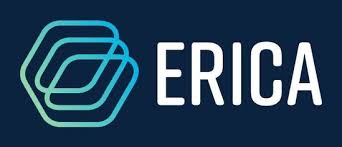 The aim of the European Rare Disease Research Coordination and Support Action consortium (ERICA), in which all 24 European Reference Networks (ERNs) participate, is to build on the strengths of the individual ERNs and create a platform that integrates all ERNs’ research and innovation capacity.
The aim of the European Rare Disease Research Coordination and Support Action consortium (ERICA), in which all 24 European Reference Networks (ERNs) participate, is to build on the strengths of the individual ERNs and create a platform that integrates all ERNs’ research and innovation capacity.
EJP RD

ERDERA
European Collaboration
Rare 2030
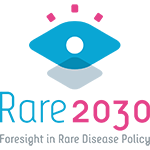 Rare 2030 was a two-year foresight study funded by the European Commission that gathered the input of over 250 experts from across the rare disease community (patients, practitioners, and key opinion leaders) to propose policy recommendations leading to improved policy and a better future for people living with a rare disease in Europe.
Rare 2030 was a two-year foresight study funded by the European Commission that gathered the input of over 250 experts from across the rare disease community (patients, practitioners, and key opinion leaders) to propose policy recommendations leading to improved policy and a better future for people living with a rare disease in Europe.Global Collaboration
CureforU
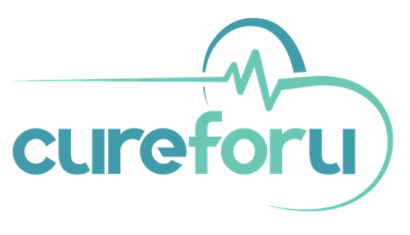 Since March 2022, a Memorandum of Understanding (MoU) has been signed and in place between ERN eUROGEN and CureforU, The aims of collaboration are:
Since March 2022, a Memorandum of Understanding (MoU) has been signed and in place between ERN eUROGEN and CureforU, The aims of collaboration are:
Confederación Americana de Urología (CAU)
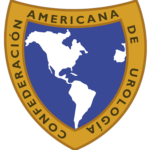 Since May 2023, a Memorandum of Understanding (MoU) has been signed and in place between ERN eUROGEN and the Confederación Americana de Urología (CAU) to collaborate on penile cancer. The aims of the collaboration are to:
Since May 2023, a Memorandum of Understanding (MoU) has been signed and in place between ERN eUROGEN and the Confederación Americana de Urología (CAU) to collaborate on penile cancer. The aims of the collaboration are to:
Murdoch Children’s Research Institute
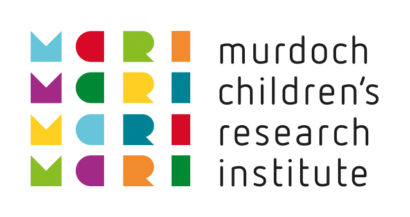 Since April 2022, a Memorandum of Understanding (MoU) has been signed and in place between ERN eUROGEN and the Murdoch Children’s Research Institute in Melbourne, AU, to form a uro-recto-genital collaborative working group on anorectal malformation (ARM) innovations. The aims of this group are to:
Since April 2022, a Memorandum of Understanding (MoU) has been signed and in place between ERN eUROGEN and the Murdoch Children’s Research Institute in Melbourne, AU, to form a uro-recto-genital collaborative working group on anorectal malformation (ARM) innovations. The aims of this group are to:
RDI & WHO Collaborative Global Network
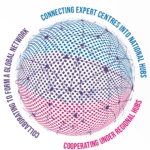 In December 2019, Rare Diseases International (RDI) signed a Memorandum of Understanding with the World Health Organisation (WHO).
In December 2019, Rare Diseases International (RDI) signed a Memorandum of Understanding with the World Health Organisation (WHO).

